 Years ago I met a woman named Helen who owned a witch shop in a rural Massachusetts town. I used to wander into her shop on any given afternoon, buy a few items and spend hours talking about paranormal and supernatural subjects. Helen’s shop was not a purely commercial venture. She really enjoyed speaking with people and discussing occult and magical themes. One day I asked her how she had come to open the shop. Helen mentioned that she had been a nurse in California, but found herself in need of new scenery and change in her life. She had some friends in Massachusetts and decided to visit them. On a crisp October day while walking through the forest amidst the breathtaking New England foliage, she noticed little sparks of light that seemed to be float through the air. Within seconds these lights began to grow larger and increase in number until they completely surrounded her. She leaned in to get a closer look and saw that inside each ball of light was a miniature person who seemed to float effortlessly through the air. They looked at her and smiled and said, “We’re here. You should stay here too!” Then they disappeared. As a result of this peculiar vision, Helen decided to stay in the area and open a witch shop what had long been her dream. Helen concluded her story with, “How could I refuse such a gracious invitation from the faerie folk?”
Years ago I met a woman named Helen who owned a witch shop in a rural Massachusetts town. I used to wander into her shop on any given afternoon, buy a few items and spend hours talking about paranormal and supernatural subjects. Helen’s shop was not a purely commercial venture. She really enjoyed speaking with people and discussing occult and magical themes. One day I asked her how she had come to open the shop. Helen mentioned that she had been a nurse in California, but found herself in need of new scenery and change in her life. She had some friends in Massachusetts and decided to visit them. On a crisp October day while walking through the forest amidst the breathtaking New England foliage, she noticed little sparks of light that seemed to be float through the air. Within seconds these lights began to grow larger and increase in number until they completely surrounded her. She leaned in to get a closer look and saw that inside each ball of light was a miniature person who seemed to float effortlessly through the air. They looked at her and smiled and said, “We’re here. You should stay here too!” Then they disappeared. As a result of this peculiar vision, Helen decided to stay in the area and open a witch shop what had long been her dream. Helen concluded her story with, “How could I refuse such a gracious invitation from the faerie folk?”
I listened wide eyed to Helen’s story. At the time, I had seen many spirits manifest in physical form and of course communicated psychically and via divination tools with them almost on a daily basis, but I had never heard of people interacting in such a direct way with faerie folk and in fact had only a vague knowledge of their existence within the spiritual realm. Frist it’s important to define what faeries are. They are elemental spirits that have never lived on Earth in human form such as our deceased loved ones and spirit guides. They are composed of elemental energy and often associated with specific geographic locations. Some paranormal experts go as far as to say that faeries are made of air energy and other “wee people” such as elves, leprechauns, gnomes are made of Earth energy. Also, it is a known fact that the jinn of Islamic theology are spirits made of fire energy. Faeries, as thought of in the popular imagination, are normally associated with Ireland and the British Isles, but elemental spirits can be found in various cultures throughout the world in locations as disparate as China, Scandinavia and the Americas. They simply exist in a different realm and can on occasion cross over into our physical world and manifest in the whimsical forms with which we associate them.
In Ireland, especially, faeries have gained the reputation of being tricksters. There is even a phenomena known as “changelings” where faeries are known to take small children back to their realm and replace them with a faerie that has taken on the physical form of the child. I have seen no convincing evidence of the changeling phenomena and I assume it to be a product of popular imagination. I have heard stories of faeries temporarily possessing people and causing them to lose time. Helen, my witch friend, has told me that she had another encounter with the faerie folk while living in Ireland in her early twenties. In many rural Irish communities, farmers will often keep a section of their field un-ploughed. These are known as faerie mounds and are believed to be inhabited by the faerie folk and are spots where the veil between the spiritual world and the physical world is quite thin. One night Helen decided to go walking through the fields near the home of her relatives and soon she came upon the faerie mound. She stopped for a moment and noticed dozens on tiny flickering lights swirling around her. Then everything went blank. When she regained consciousness, she was in the back of a truck being driven back to her family’s home. She told them of the experience and they said matter-of-factly, “Oh, yes. You were faerie struck. It happens a lot. The wee people took you.” Shocked at their response and their belief that this was normal, Helen wanted to go back immediately. They advised her against it saying, “You were lucky. They might not let you come back next time.” This was an experience that set Helen down a path of spiritual discovery that has lasted to this day.
In Ireland, faeries have at different times in history gotten the reputation of being tricksters, troublemakers and of even being downright malevolent. This would be explained by the theory that faeries and other elemental spirits once belonged to the spiritual pantheons of ancient pagan religions and simply were demoted to a lesser class of spirit in later centuries. In other parts of the world, faeries do not always share the same trickster reputation and often considered quite benevolent and helpful. In the popular folklore of Transylvania, there is a class of faerie folk or rather wee people called the “Oamenii Buni” or “Good People,” who live in their own separate realm and live a holy life of fasting and praying and celebrating feast days. There is a tradition that says that the Good People celebrate Easter eight days after humans because it takes that long for news of the feast to arrive in their land. Villagers traditionally throw the red shells of dyed Easter eggs in the river to let the Good People know that Easter has come. When the Good People cross over into the physical realm, they often help people who are having difficult moments in life. This is a far contrast to the demanding, trickster spirits of Ireland and British Isles. Whatever the case, there is no denying that the faerie folk can be called upon for help in magical workings, especially to conjure luck and wealth.
You must exercise caution when dealing with the faerie folk. Always pray for protection before invoking them and command that any harmful spirits depart from you and state that only positive love based spirits are welcome. Also, never break a promise to a faerie as they tend to be far more vengeful than other types of spirits. The traditional offering to faeries in the British Isles is bread and milk which is left on the back stairs outside of the home or on the edge of the forest. This tradition was carried over to the Appalachian region on the United States by Scottish and Irish immigrants although corn bread is often used there as it is more common to the region. Also, according to Helen, European faeries and Native-American elemental spirits comingle in New England’s forests and their favorite offering is chocolate. To make an offering to the faerie folk simply lay your offerings of choice (you can’t go wrong with bread and milk) directly on the ground outside and make your petition. Ask for the help of the faerie folk in whatever you’d like and simply turn and walk away without looking back. In particularly difficult situations, you may also wish to make a promise to the faerie folk that must be fulfilled once the help is granted, but just make sure to deliver whatever you’ve promised. If you’d like a more permanent relationship with the faerie folk, you can plant a patch of wildflowers in your garden or somewhere on your property and make regular offerings there. I have several friends who are magical gardeners and they assure me that faeries are attracted to many varieties of sweet smelling wildflowers.
I hope you have enjoyed this post and if you have any experiences with the faerie folk, please share them with me. As always I will you peace, happiness and abundant blessings!
Performing a Spiritual Revocation
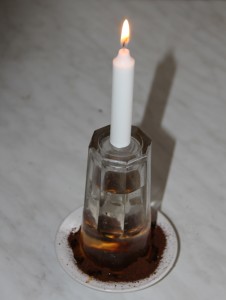 We have explored the importance of spiritual cleansings, especially salt water baths, to keep us in a state of spiritual purity and to neutralize the negativity that I have termed “psychic sludge” that can accumulate as a result of the stresses and frustrations of daily life and our interactions with less-than-positive people. Salt water baths are a highly effective means of spiritual cleansing and I recommend that everybody take one once a month as a general rule. Today I would like to share a different type of spiritual cleansing or rather spiritual defense ritual that can be used when you feel that you are the victim of a spell, curse, unhealthy spiritual attachment or the evil eye. This ritual is known as a revocation and not only does it rid you of the particular spiritual affliction, but it sends it back to its source. Before we discuss how to perform a revocation, I would like to state that being a victim of a curse, hex or having a malicious spirit placed on you is far rarer than most people think. Almost every day, I have people come to me for consultations believing they are cursed. Out of one hundred of such cases, I maybe find one person who has legitimately been cursed. Most of the blockages, setbacks and bad luck that people suffer is due to a buildup of the negativity of day to day life sticking to them. This is easily remedied by a simple salt water bath or by blessing oneself with holy water or Florida Water. A revocation should only be performed when a person knows for a fact that malicious magic has been performed against him or her. There are different forms of revocations from different spiritual traditions. The following was taught to me over twenty years ago by an espiritista and Hoodoo root worker from Massachusetts named India. It has proven highly effective over the years and since then I have learned many similar revocations from various Afro-Caribbean, Mexican and Central American spiritual traditions that vary slightly in procedure yet are still equally effective, but the version I will teach you today was the first that I learned and remains my favorite to this day for its simplicity and efficacy.
We have explored the importance of spiritual cleansings, especially salt water baths, to keep us in a state of spiritual purity and to neutralize the negativity that I have termed “psychic sludge” that can accumulate as a result of the stresses and frustrations of daily life and our interactions with less-than-positive people. Salt water baths are a highly effective means of spiritual cleansing and I recommend that everybody take one once a month as a general rule. Today I would like to share a different type of spiritual cleansing or rather spiritual defense ritual that can be used when you feel that you are the victim of a spell, curse, unhealthy spiritual attachment or the evil eye. This ritual is known as a revocation and not only does it rid you of the particular spiritual affliction, but it sends it back to its source. Before we discuss how to perform a revocation, I would like to state that being a victim of a curse, hex or having a malicious spirit placed on you is far rarer than most people think. Almost every day, I have people come to me for consultations believing they are cursed. Out of one hundred of such cases, I maybe find one person who has legitimately been cursed. Most of the blockages, setbacks and bad luck that people suffer is due to a buildup of the negativity of day to day life sticking to them. This is easily remedied by a simple salt water bath or by blessing oneself with holy water or Florida Water. A revocation should only be performed when a person knows for a fact that malicious magic has been performed against him or her. There are different forms of revocations from different spiritual traditions. The following was taught to me over twenty years ago by an espiritista and Hoodoo root worker from Massachusetts named India. It has proven highly effective over the years and since then I have learned many similar revocations from various Afro-Caribbean, Mexican and Central American spiritual traditions that vary slightly in procedure yet are still equally effective, but the version I will teach you today was the first that I learned and remains my favorite to this day for its simplicity and efficacy.
Before explaining the actual procedure, I would like to say what a revocation is and what it is not. Many people are hesitant to approach a revocation believing that it is a curse or some type of maleficent magic and that they will incur some form of karmic debt by performing it. I assure you that this is not the case. All a revocation does is remove whatever negativity may have been placed on you and send it back to its source. The person to whom it is returned, may or may not experience some negative effects, but this is based purely on his or her own actions and intentions taken towards you in the first place and is not an act of aggression on your part. Performing a revocation is not tantamount to putting a curse on somebody, but rather simply a way of cleansing, protecting and standing up for yourself and saying that you refuse to be a victim of somebody else’s spiritual attack.
In order to perform the revocation, fill a tall drinking glass with water and place a saucer or small plate on top of it and then invert it. The suction will cause the water to stay inside the upside down glass. Place coffee grounds around the base of the glass and a small taper candle on top. Light the candle and pray silently asking that all the negativity, hexes, curses, spells, the evil eye and spirits placed on you by others be removed and sent back to their source. If you know the name of the person who has performed a working against you, you may mentioned him or her by name. Otherwise just revoke in general all negative magic that may have been done against you. Allow the candle to burn out on its own and then throw the coffee grounds and water out the front door and rebuke with authority all magic done against you. After the ritual is complete, any oppressive energies around you will dissipate and all spiritual attacks will cease. You may wish to take a salt water bath after performing the revocation for further spiritual cleansing and purification and of course pray always for spiritual protection.
I sincerely hope that you never need to perform this revocation, but it is a valuable spiritual tool to have at your disposal. I thank you for taking the time to read my blog and as always I wish you peace, happiness and abundant blessings!
Colognes and Perfumes in Voodoo and Hoodoo
The other day I was looking through my spiritual supply closet and it occurred to me that there is an important aspect of Voodoo and Hoodoo work that we have not yet explored: the use of perfumes and colognes in the preparation of baths, floor washes and other spiritual workings. Almost on a daily basis I use products such as Florida Water, Pompeia, Kolonia 1800, Kananga Water and Hoyt’s Cologne which are admittedly an indispensable part of any New Orleans Voodoo or Southern Hoodoo practice, so today I would like to discuss the uses for these various products as well as the history of how they became such a fundamental part of many spiritual traditions of the African diaspora.
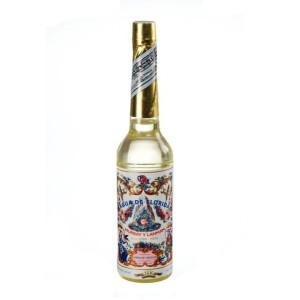 Florida Water: If nothing else, the one item on this list that every spiritual practitioner interested in Voodoo, Hoodoo or Kardecian Spiritism should have at all times is Florida Water, or as it is popularly known in Spanish, Agua Florida. Florida Water is an incredibly versatile product. It is applied directly to the skin and hair as a spiritual cleansing agent and can also be sprinkle around the home or altar to cleanse a sacred space. Practitioners of Caribbean style Espiritsmo often sprinkle Florida Water on their bóvedas or spiritual altars when they refresh them each Monday. Also during the Misa Espiritual copious amount of Florida Water are sprinkled about the room and even set of fire as offerings to the spirits and as a means of attracting them.
Florida Water: If nothing else, the one item on this list that every spiritual practitioner interested in Voodoo, Hoodoo or Kardecian Spiritism should have at all times is Florida Water, or as it is popularly known in Spanish, Agua Florida. Florida Water is an incredibly versatile product. It is applied directly to the skin and hair as a spiritual cleansing agent and can also be sprinkle around the home or altar to cleanse a sacred space. Practitioners of Caribbean style Espiritsmo often sprinkle Florida Water on their bóvedas or spiritual altars when they refresh them each Monday. Also during the Misa Espiritual copious amount of Florida Water are sprinkled about the room and even set of fire as offerings to the spirits and as a means of attracting them.
Florida Water is produced by Lanman & Kemp Barclay and according to the company was originally produced in 1808 in New York City designed to have a refreshing citrus and spice scent based on colognes that were popular in Europe at the time. The product does indeed emit a beautiful orange-like scent with hints of clove and cinnamon. As more practitioners of Southern Hoodoo, Espiritismo and another African Diaspora traditions migrated to New York and other US cities from the Caribbean and the American South, they noticed that Florida Water had the power to cleanse away negative energies and repel negative spirits while attracting good ones and they quickly assimilated it into their spiritual practices. Florida Water is a valuable tool when working with spirits and ancestors, but I would not advise you to use it with saints and Orishas. As a Santera friend of mine in Massachusetts once told me, “Agua Florida is for muertos. Period.” The best and simplest way to use Florida Water is to use it as a cologne and to sprinkle it around your home or altar as an agent for spiritual cleansing and a means of summoning your spirit guides and to create an overall positive vibe around you and your sacred space.
 Kolonia 1800: Kolonia 1800 is a rather new product as compared to Florida Water. It was been on the market only since 1967 which would account for its uses being more limited and less defined when compared to other products that have been available since the early 1900’s. This pleasant slightly floral scented cologne is less intense than Florida Water. Kolonia 1800 was originally made in Miami by Crusellas and Company, a company that had been famous in Cuba for making soup and other household products. Following the 1959 revolution and the nationalization of all major businesses in Cuba, the company relocated to Miami in 1960 and began to produce its signature cologne in 1967. Kolonia 1800 can be used for cleansing and as an addition to spiritual baths, although its powers and effects are not as intense as Florida Water, based on my personal experience. Many people use Kolonia 1800 as an offering to spirit guides who enjoy the scent. I find that this particular perfume has luck drawing properties and when I make money drawing gris gris charms or baths, I will often add to them a few drops of Kolonia 1800 to increase their efficacy.
Kolonia 1800: Kolonia 1800 is a rather new product as compared to Florida Water. It was been on the market only since 1967 which would account for its uses being more limited and less defined when compared to other products that have been available since the early 1900’s. This pleasant slightly floral scented cologne is less intense than Florida Water. Kolonia 1800 was originally made in Miami by Crusellas and Company, a company that had been famous in Cuba for making soup and other household products. Following the 1959 revolution and the nationalization of all major businesses in Cuba, the company relocated to Miami in 1960 and began to produce its signature cologne in 1967. Kolonia 1800 can be used for cleansing and as an addition to spiritual baths, although its powers and effects are not as intense as Florida Water, based on my personal experience. Many people use Kolonia 1800 as an offering to spirit guides who enjoy the scent. I find that this particular perfume has luck drawing properties and when I make money drawing gris gris charms or baths, I will often add to them a few drops of Kolonia 1800 to increase their efficacy.
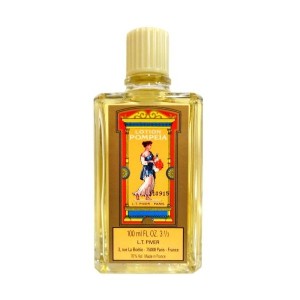 Pompeia: Pompeia or as it is also called Lotion Pompeia is a sweet scented perfume first made in France by fragrance experts Jacques Rouche and Georges Darzens in 1907 as a high quality women’s perfume. The scent of Pompeia is floral and potent. In Haitian Vodou, Pompeia is used as an offering to the Rada Lwa, especially Erzulie Freda and bottles of it are often sprinkled on altars for the lwa and before services dedicated to the rada lwa. I first learned of Pompeia years ago in Massachusetts from a Puerto Rican Santera and Espiritista who used it as an ingredient in love spells and spiritual baths. The Santera was a daughter of Ochun and would always have a bottle of Pompeia on her altar as an offering to her patron orisha.
Pompeia: Pompeia or as it is also called Lotion Pompeia is a sweet scented perfume first made in France by fragrance experts Jacques Rouche and Georges Darzens in 1907 as a high quality women’s perfume. The scent of Pompeia is floral and potent. In Haitian Vodou, Pompeia is used as an offering to the Rada Lwa, especially Erzulie Freda and bottles of it are often sprinkled on altars for the lwa and before services dedicated to the rada lwa. I first learned of Pompeia years ago in Massachusetts from a Puerto Rican Santera and Espiritista who used it as an ingredient in love spells and spiritual baths. The Santera was a daughter of Ochun and would always have a bottle of Pompeia on her altar as an offering to her patron orisha.
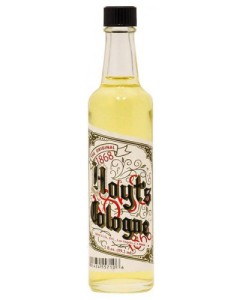 Hoyts Cologne: Hoyts Cologne is a fresh and clean smelling cologne that since the early 1900’s has been popular in Southern Hoodoo circles for conjuring good luck and money especially as related to games of chance. People often add it to bath water or apply it directly to the skin before playing the lottery or going to the casino. I have heard stories of people dumping an entire bottle of Hoys Cologne on themselves before participating in games of chance or even blessing their dice or cards with this lucky cologne before playing. I often add a few drops of Hoyts Cologne to gris gris bags and other charms that I make for the purpose of attracting money and luck. It’s proven highly effective and I definitely recommend having a bottle on hand for use in money magic.
Hoyts Cologne: Hoyts Cologne is a fresh and clean smelling cologne that since the early 1900’s has been popular in Southern Hoodoo circles for conjuring good luck and money especially as related to games of chance. People often add it to bath water or apply it directly to the skin before playing the lottery or going to the casino. I have heard stories of people dumping an entire bottle of Hoys Cologne on themselves before participating in games of chance or even blessing their dice or cards with this lucky cologne before playing. I often add a few drops of Hoyts Cologne to gris gris bags and other charms that I make for the purpose of attracting money and luck. It’s proven highly effective and I definitely recommend having a bottle on hand for use in money magic.
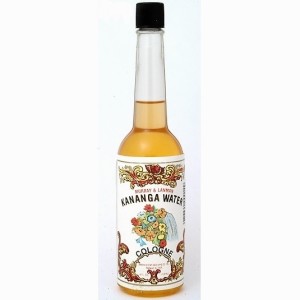 Kananga Water: Kananga water shares many of the same uses as Florida Water, although its scent is less citrus and spice based. As the name would indicate, its main ingredient is Kananga which is a plant also known as Ylang Ylang. Much like the other colognes listed here, it was originally meant to be used as a refreshing fragrance but spiritual workers noticed it had benefits that go beyond smelling nice. I personally find that Kananga water is not as powerful a spiritual cleanser as Florida Water, but spirits are attracted to its scent so I do recommend sprinkling some on your altar as an offering.
Kananga Water: Kananga water shares many of the same uses as Florida Water, although its scent is less citrus and spice based. As the name would indicate, its main ingredient is Kananga which is a plant also known as Ylang Ylang. Much like the other colognes listed here, it was originally meant to be used as a refreshing fragrance but spiritual workers noticed it had benefits that go beyond smelling nice. I personally find that Kananga water is not as powerful a spiritual cleanser as Florida Water, but spirits are attracted to its scent so I do recommend sprinkling some on your altar as an offering.
 Chinese Floor Wash: This last item is not exactly a cologne, but I’ve decided to include it since like the other ingredients on this list, it is a fundamental part of Southern Hoodoo practice. Chinese Floor Wash, particularly the name brand Young’s Chinese Floor Wash, was a commercial pine and lemon scented floor cleaner popular in the early 1900’s that ceased production sometime during or shortly before WWII. Southern Hoodoo Root workers quickly noticed that this cleaning product also spiritually cleansed a space and promoted good luck and positive energy. Today there are many Chinese Floor Washes, some are of decent quality, and others are little more than dyed water. Below is my personal recipe for Chinese Floor Wash which has worked wonders for me over the years. Think of it as a spiritual bath for your entire home. I use it around January 1st each year for clean beginnings and also sometime in October before Halloween which is the Pagan and Voodoo New Year (Fête Ghede).
Chinese Floor Wash: This last item is not exactly a cologne, but I’ve decided to include it since like the other ingredients on this list, it is a fundamental part of Southern Hoodoo practice. Chinese Floor Wash, particularly the name brand Young’s Chinese Floor Wash, was a commercial pine and lemon scented floor cleaner popular in the early 1900’s that ceased production sometime during or shortly before WWII. Southern Hoodoo Root workers quickly noticed that this cleaning product also spiritually cleansed a space and promoted good luck and positive energy. Today there are many Chinese Floor Washes, some are of decent quality, and others are little more than dyed water. Below is my personal recipe for Chinese Floor Wash which has worked wonders for me over the years. Think of it as a spiritual bath for your entire home. I use it around January 1st each year for clean beginnings and also sometime in October before Halloween which is the Pagan and Voodoo New Year (Fête Ghede).
James Duvalier’s Chinese Floor Wash
One Bucket of Warm Water
One Cup Ammonia
Handful of Pine Needles
Handful of Dried Lemon Peels
Handful of Dried Orange Peels
Pinch of Kosher or Sea Salt
One Dried Corn Husk
Mix all the ingredients together and allow to sit for at least an hour.
Mop your floors as you normally would while saying a prayer for peace and prosperity in the home.
I hope you have enjoyed this post and I thank you for taking the time to visit my blog. As always, I wish you peace, happiness and abundant blessings.
Mademoiselle Charlotte
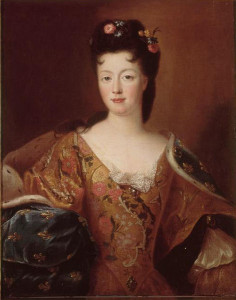 According to popular belief in Haiti, there is an elegant female lwa named Mademoiselle Charlotte who is quite elusive and whose appearances at Vodou dances and ceremonies is considered a rare and unique blessing. She has been known to appear in physical form as a young beautifully dressed white woman wearing a silk kerchief, dark sunglasses, white gloves and immaculately coiffed with a 1950’s hair style driving a pink Cadillac around quiet neighborhoods of Port-au-Prince and the Haitian countryside. Mademoiselle Charlotte is known to be picky with those who seek her favors, but as somebody who has worked successfully with this beautiful lwa, I can tell you that it is well worth building a relationship with her and for this reason I wanted to explain a bit about the origins, characteristics and ways of serving Mademoiselle Charlotte.
According to popular belief in Haiti, there is an elegant female lwa named Mademoiselle Charlotte who is quite elusive and whose appearances at Vodou dances and ceremonies is considered a rare and unique blessing. She has been known to appear in physical form as a young beautifully dressed white woman wearing a silk kerchief, dark sunglasses, white gloves and immaculately coiffed with a 1950’s hair style driving a pink Cadillac around quiet neighborhoods of Port-au-Prince and the Haitian countryside. Mademoiselle Charlotte is known to be picky with those who seek her favors, but as somebody who has worked successfully with this beautiful lwa, I can tell you that it is well worth building a relationship with her and for this reason I wanted to explain a bit about the origins, characteristics and ways of serving Mademoiselle Charlotte.
The origins of Mademoiselle Charlotte are obscure. Due to her appearance as a white woman, she is believed to be of European, specifically French, origin. Some people believe she is the spiritual embodiment of elegant French plantation wives during the colonial period. It is arguable that she is also of more modern origin since she is seldom served as part of the traditional Vodou liturgy but rather in private settings. She does not appear in West African Vodun nor in Louisiana Voodoo, but is unique to Haitian Vodou. When she does on occasion mount people during Voodoo ceremonies she will only speak French, which in Haiti is seen as a language of refinement. Even people with no knowledge of the French language are known to speak it while under Mademoiselle Charlotte’s possession. Mademoiselle Charlotte shares many of the characteristics of Erzulie Freda in terms of beauty, grace, elegance and refinement, but she lacks her temper and need for attention and does not have the outbursts of crying to which Erzulie is prone. She is intensely private and mysterious, yet incredibly beautiful, kind and generous.
Mademoiselle Charlotte is served in much the same was as Erzulie Freda with many of her offerings being similar. She enjoys champagne, sweet cakes, flowers and water sweetened with flavored syrups. Her favorite offering is called acassan and is a sweet beverage based on corn flour simmered in milk, sweetened with cane syrup and flavored with star anise, cinnamon and other spices. She also enjoys the meat of young chickens either gently boiled or roasted and picked from the bone and presented on a nice plate or platter. Although not traditional, in my experience sweet liqueurs such as Chambord, Cointreau or Banana Liqueur may be offered to Mademoiselle Charlotte. Her color is light pike or rose and candles used during a service to her should be of this color.
Making a service to Mademoiselle Charlotte is simple. Keeping in line with her very nature, her service should be private and elegant. I recommend creating a sacred space just for her in a private and quiet space in your home. Lay out a white tablecloth, ideally lace, and place on top of it some of her favorite offerings and light a light pink or rose colored candled. Write out your requests on a piece of paper and leave it next to her offerings. Quietly exit the room and allow the candle to burn out on its own and leave the offerings in place overnight and then disposed of them the following day. If she takes a liking to you, the blessing of Mademoiselle Charlotte will manifest in your life in subtle yet powerful and noticeable ways.
I hope you have enjoyed learning about the beautiful, mysterious and powerful Mademoiselle Charlotte. I thank you for taking the time to read my blog. As always I wish you peace, happiness and abundant blessings!
The Rites of Spring
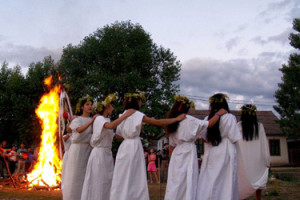 We find ourselves again in the middle of spring, at least those of us in the Northern Hemisphere. Where I live the sun is setting later and later, the trees are in full bloom and the first fruits of the season, mainly strawberries, are starting to come in by the bucket load. Admittedly my favorite season is autumn with its colors, cool breezes that are fragrant with the scent of drying leaves and abundant harvests, but as a spiritual person I understand the importance of being in touch with the full cycle of the year’s seasons. Spring is a time of regeneration and fertility and many cultures throughout the world hold rites and rituals to celebrate the aspect of renewal that is so visible this time of year. Today I thought we could look at some of the traditions and popular folklore surrounding this magical season of rebirth.
We find ourselves again in the middle of spring, at least those of us in the Northern Hemisphere. Where I live the sun is setting later and later, the trees are in full bloom and the first fruits of the season, mainly strawberries, are starting to come in by the bucket load. Admittedly my favorite season is autumn with its colors, cool breezes that are fragrant with the scent of drying leaves and abundant harvests, but as a spiritual person I understand the importance of being in touch with the full cycle of the year’s seasons. Spring is a time of regeneration and fertility and many cultures throughout the world hold rites and rituals to celebrate the aspect of renewal that is so visible this time of year. Today I thought we could look at some of the traditions and popular folklore surrounding this magical season of rebirth.
 As far back as pre-Christian Europe and probably since time immemorial, various cultures have observed rites and rituals to celebrate spring as the season or fertility and rebirth. Ancient Celts believed that the six months of the year starting with Beltane (May 1st) and ending with Samhain (October 31st) belong to the Mother Goddess who was the embodiment of fertility, motherhood and agriculture and the other months belonged to the Horned God who represented male energy, virility and hunting. In line with these beliefs, every spring, country dwellers would carry out numerous rituals to seek the blessing of the Mother Earth Goddess. It was common to pour offerings of milk and honey directly into the Earth to ask for an abundant harvest. As Christianity took root in Europe, the spring was chosen as the time to celebrate Easter, the Resurrection of Jesus, which to this day is filled with symbols of fertility and rebirth having been adopted from Europe’s pagan past. Also, in the Catholic Church, the month of May is sacred to the Blessed Virgin Mary and it is a tradition in many countries to bring lavish bouquets of spring flowers to her in churches. Modern Wiccans and other Neo-Pagans observe Beltane much in the same way as their Pagan ancestors did millennia ago and view it is the beginning of High Spring. My Wiccans friends have told me that in addition to being a celebration of fertility, Beltane is a time of light, playful energy during which faeries, elves and other Earth spirits are highly active.
As far back as pre-Christian Europe and probably since time immemorial, various cultures have observed rites and rituals to celebrate spring as the season or fertility and rebirth. Ancient Celts believed that the six months of the year starting with Beltane (May 1st) and ending with Samhain (October 31st) belong to the Mother Goddess who was the embodiment of fertility, motherhood and agriculture and the other months belonged to the Horned God who represented male energy, virility and hunting. In line with these beliefs, every spring, country dwellers would carry out numerous rituals to seek the blessing of the Mother Earth Goddess. It was common to pour offerings of milk and honey directly into the Earth to ask for an abundant harvest. As Christianity took root in Europe, the spring was chosen as the time to celebrate Easter, the Resurrection of Jesus, which to this day is filled with symbols of fertility and rebirth having been adopted from Europe’s pagan past. Also, in the Catholic Church, the month of May is sacred to the Blessed Virgin Mary and it is a tradition in many countries to bring lavish bouquets of spring flowers to her in churches. Modern Wiccans and other Neo-Pagans observe Beltane much in the same way as their Pagan ancestors did millennia ago and view it is the beginning of High Spring. My Wiccans friends have told me that in addition to being a celebration of fertility, Beltane is a time of light, playful energy during which faeries, elves and other Earth spirits are highly active.
Faeries and elves are what are known as elemental spirits. They are spirits of Earth, Air, Fire and Water that can at times manifest in physical form. I am not an expert in Faerie magic, but I do know many spiritual workers who work primarily with faeries. In Ireland and the British Isles, it was a tradition to place a dish of milk and a crust of bread on the back step or in the yard as an offering to the faerie folk or the little people in exchange for them watching over the land or not causing any harm. This tradition was carried to America by Scottish immigrants and remains popular in the Appalachian region of the United States, although today chocolate is often substituted for bread and milk. In Eastern Europe, particularly in Transylvania, there is also much faerie lore that is especially associated with the spring season. As the days grow warmer and longer, the faerie folk become more active. The night of June 23rd, Saint John’s Night, which in many magical traditions is a powerful night of spiritual manifestation as the veil between the spirit world and the physical world is quite thin, is heavily associated with faerie activity. In Romania this night is known as Noapte de Sânzienele or “Faerie Night,” and many herbs are gathered on this date because they are believed to be blessed by the faeries with curative and magical powers. Within the pantheon of faeries and Earth spirits that are abroad this time of year, there is a special caste of female faeries known as the Iele to whom many mysterious powers are attributed.
The Iele are an ancient and beautiful caste of spirits that are possibly carried over from Greek and Roman times. They appear along country roads at night and dance a traditional dance called the “hora” and it is said that the ground on which they dance is scorched and nothing will grow there afterwards. The Iele are unspeakably beautiful and their names are only known to a select few witches who can invoke them for both good and evil. “Iele” is a popular Romanian term meaning “them,” as their official names are a well-guarded secret. The Iele are particularly active in the springtime and peasants believe that they can be called upon after Pentecost to seek particular blessings as well as settle old scores. Well into the 20th century there was a secret society known as the Calusari whose members were recruited from villages across Romania that traveled across the countryside during the time of year when the Iele are most active and were believed to have the power to undo curses and spells cast by the Iele. The tradition of the Calusari largely died out by the mid-20th century and their traditional dances are reenacted for tourists today but I have heard rumors that the Calusari and similar secret societies exist and operate today in rural Romania.
I hope you have enjoyed this post about some of the spiritual beliefs concerning the spring season and I hope thing time of year is one of rebirth and renewal for you. As always I wish you peace, happiness and abundant blessings!